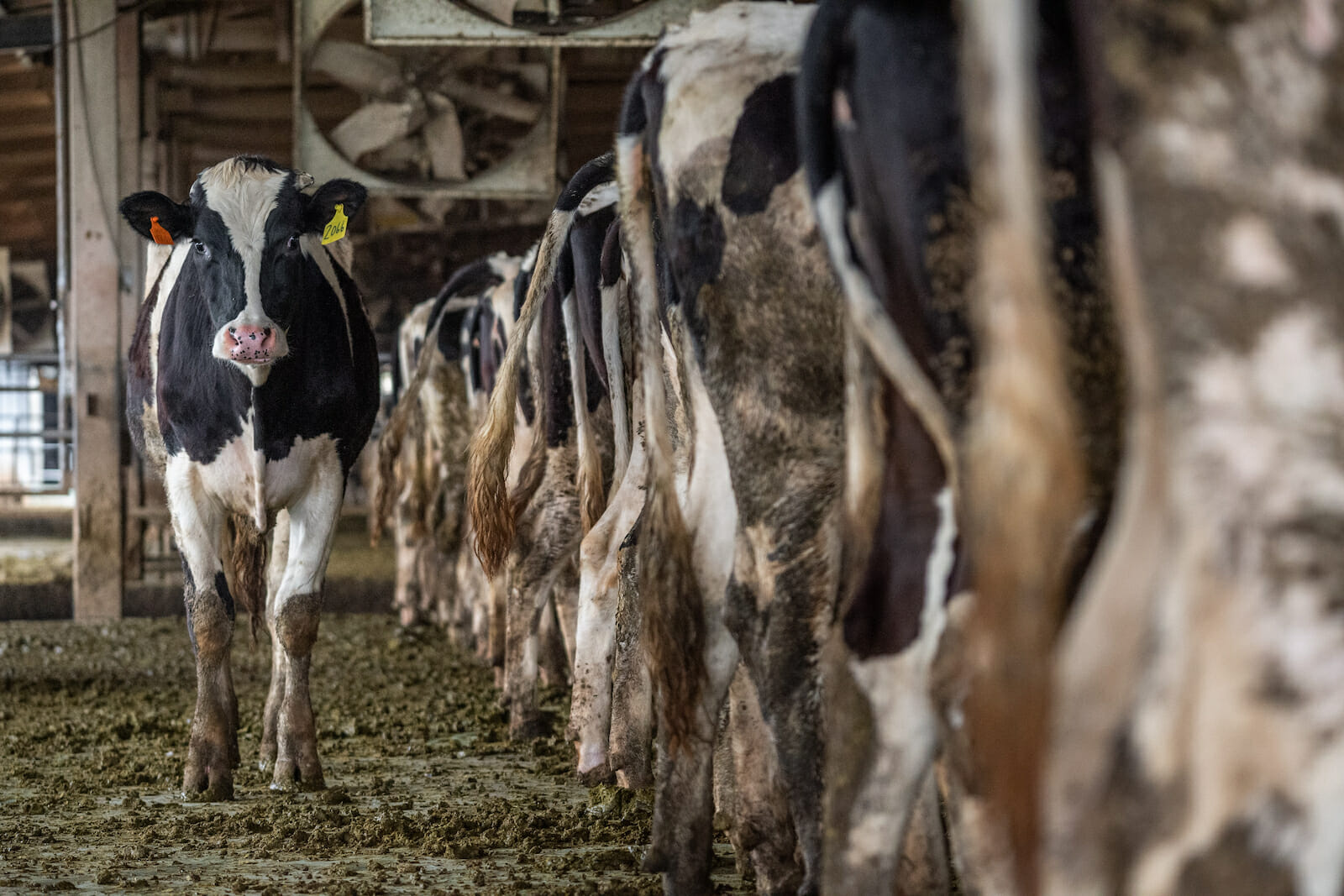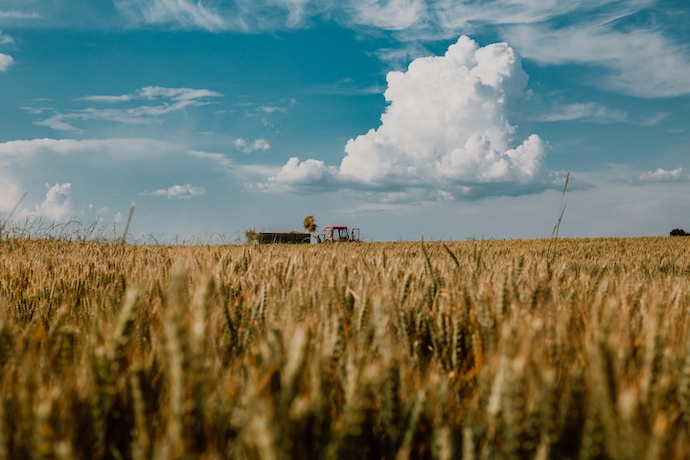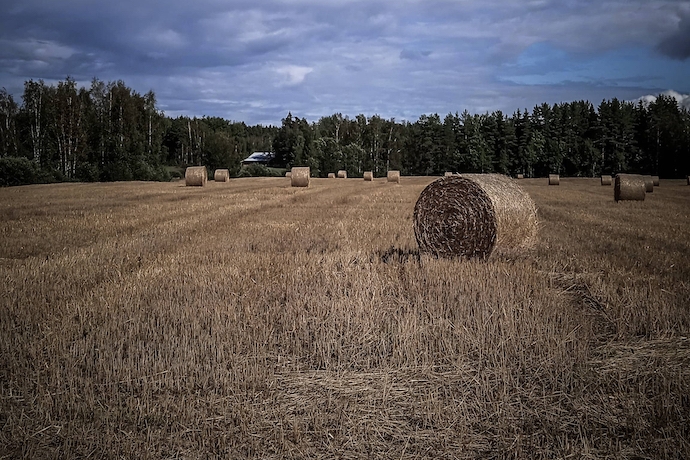
U.S. Agriculture is in Crisis
It would seem that the United States’ agricultural sector is currently going through somewhat of an existential crisis. A seemingly unending cycle of disasters has left many farmers and distributors alike struggling to make ends meet in an extremely volatile market. Production costs continue to rise, undermining competitiveness in a sector hindered by unfavorable conditions as a result of environmental disasters, the pandemic, and rising debt. Indeed, these issues weigh heavily on the entire American agri-food chain in what appears to be a systemic crisis in the agricultural model itself.
Labor shortages and COVID
The U.S. agricultural sector has been under pressure for years. An acute shortage of labor, especially in rural areas, has plagued the industry as a result of demographic change and growing urbanization. This issue was tackled with the H-2A worker scheme, allowing temporary visas to be issued to agricultural workers, predominantly from Mexico. According to the American Farm Bureau Association, 20% of the country’s farm workforce is composed of temporary foreign workers.
“America’s farmers and ranchers are committed to feeding America’s families during the coronavirus pandemic and beyond. Workers in the H-2A program represent 20% of the country’s farm workforce, so their contributions are necessary as we enter a critical time in the planting season,” said American Farm Bureau Federation President Zippy Duvall.
At the outbreak of the pandemic, the U.S. suspended these routine immigrant and nonimmigrant visa processing services in Mexico, but quickly realized the pressure farmers would face without this labor supply, and eased the process to allow these workers access to visas.
Nevertheless, cumbersome bureaucracy coupled with the worrying effects of the pandemic has shaken the agri-food sector. The pandemic has had a seismic impact on global supply chains, with widespread labor shortages affecting all industries. Indeed, the rising costs of various inputs essential to the operation of farms has led to the situation becoming unmanageable in the long term.
 Machinery costs
Machinery costs
As the ripple effect of the pandemic and the resulting labor and supply chain crises has continued to put pressure on the agri-food sector, basic equipment costs have risen dramatically. In 2021, there was a shortage of basic farming machinery in the U.S. following “a series of events no one could have anticipated [that] slammed the entire industry the last 18 months, which left farmers, dealers, and manufacturers scrambling,” according to Curt Blades of the Association of Equipment Manufacturers (AEM).
As the pandemic hit, the manufacturing output of machinery, including many of the basic components needed to build equipment, came to a standstill. In line with the general rise in commodity prices, farmers began to order new equipment to satisfy this dramatic and sudden rise in demand, driving up prices.
Furthermore, the manufacture of new equipment has required foreign spare parts whose cost is increasing due to the labor shortages mentioned above, which must be understood in the context of the harmful consequences of Trump-era protectionism.
The resulting rise in costs has been inevitable. For example, row-crop tractors, instead of depreciating by around 10% as would be the norm, prices shot up by a staggering 27%. Data from the University of Illinois has shown that the input costs of farming machinery has risen by as much as 20% since 2019. Coupled with a dramatic rise in fuel prices, this input cost hike is putting real pressure on farmers, with effects to be felt right up the supply chain, eventually reaching consumers.
Feed costs
At the end of 2020, a report by CoBank suggested feed prices for U.S. farmers would rise by more than 12% due to inflation. A year on, a new report from Justin Sherrard, Global Strategist for animal protein at RaboResearch Food & Agribusiness, entitled “Global Animal Protein Outlook 2022,” suggests feed prices will remain high well into 2022.
 “Most producers lost money during the year, but that’s been in the midst of some of the most extreme volatility in global food demand anyone has ever seen,” said Will Sawyer, lead animal protein economist with CoBank. There is little hope that the situation will improve in 2022.
“Most producers lost money during the year, but that’s been in the midst of some of the most extreme volatility in global food demand anyone has ever seen,” said Will Sawyer, lead animal protein economist with CoBank. There is little hope that the situation will improve in 2022.
Carlos Mera, head of Agri Commodities Markets at Rabobank, said there would be no return to pre-pandemic prices in 2022. “While COVID-19-related disruption will subside, inflationary pressures and adverse weather will hit producers, making them unable to significantly expand output.”
Fertilizer costs
“Fertilizer inputs are incredibly high right now; seed, chemical, if we can get them, they’re high,” according to American Soybean Association President Kevin Scott. The dramatic rise in fertilizer costs has undoubtedly been the biggest shock for farmers in the U.S. Fertilizers represent around 15% of farmers’ cash costs and the continued price rise has therefore been of grave concern coming into 2022. The dysfunction of the U.S. fertilizer supply chain has driven up crop production costs for over a year, with corn production especially affected due to its high nitrogen fertilizer requirements.
In late 2021, fertilizer prices reached a record high, forcing farmers to delay purchases and risking a late scramble in the spring to avoid a real disaster come the harvest. Several factors have led to this price hike, not least the global supply chain crisis following the pandemic. “Global fertilizer prices have reached record highs this year, in part due to soaring prices for the natural gas used to produce them, and severe storms in the United States that disrupted production,” according to Reuters (Hurricane Ida caused real havoc on the agri-food supply chain).
Compounding the issue has been the removal of de facto suppliers from Morocco and Russia following a decision by the U.S. International Trade Commission to order import duties on phosphate fertilizers from those countries following a petition from the Mosaic Company. The primary consequence of this measure has been to considerably reduce the number of sellers, and the supply of phosphate fertilizers available to farmers. A badly-timed decision for U.S. farmers, to say the least.
The need for political intervention
It is fair to say that the build-up of these crises has put considerable strain on U.S. agriculture, and has highlighted structural issues in the system itself. Monopolization of production, distribution, and supply chains following decades of agri-business consolidation has resulted in a sector somewhat ill-prepared for the sudden, devastating shock caused by environmental disasters and the pandemic, with small farmers bearing the brunt of the resulting economic consequences.
It is clear that resolute political intervention is needed to steady the ship and offset the economic damage being done by rising inflation and soaring input costs. In a recent Executive Order, President Biden stated that “farmers are squeezed between concentrated market power in the agricultural input industries — seed, fertilizer, feed, and equipment suppliers — and concentrated market power in the channels for selling agricultural products. As a result, farmers’ share of the value of their agricultural products has decreased, and poultry farmers, hog farmers, cattle ranchers, and other agricultural workers struggle to retain autonomy and to make sustainable returns.” Let’s hope this is the first step towards a resolute solution being found by the government.
